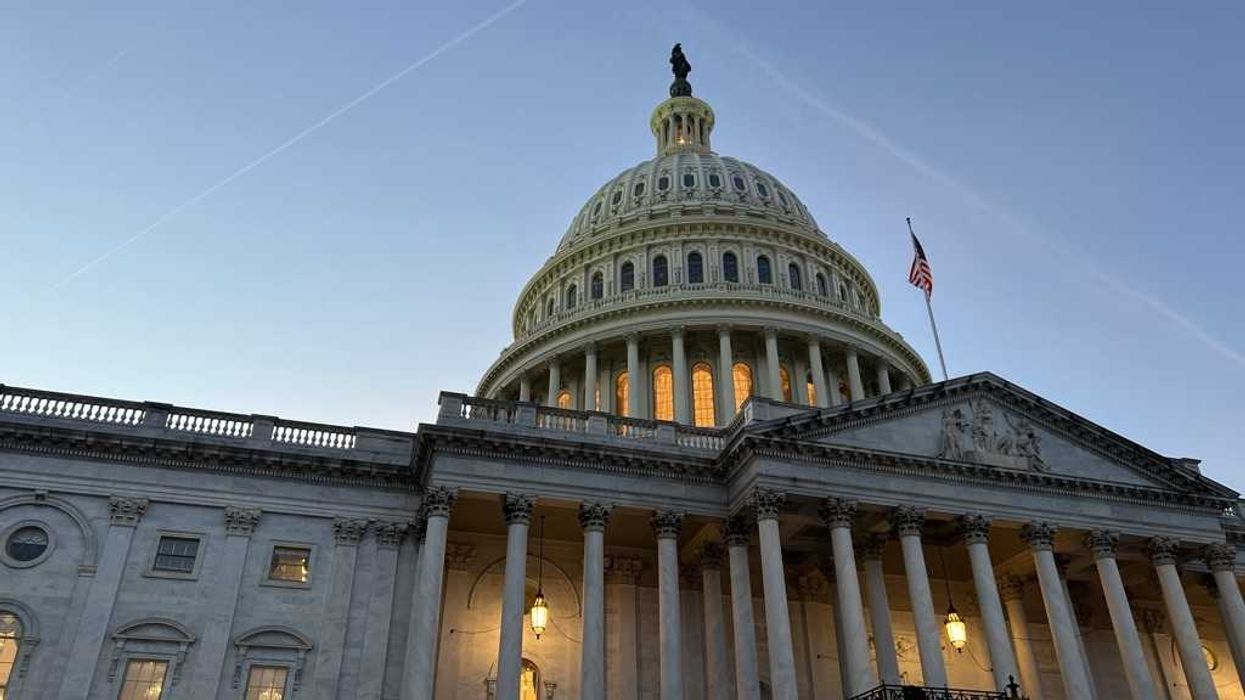“A profoundly dangerous and destabilizing thing.” That’s how Vice President J.D. Vance recently described America’s falling birthrate. Recently, the “ inherently pronatalist ” White House is considering a new set of proposals to address it—including government-funded menstrual cycle education and even a national medal for women who bear six or more children. But while Republicans may recognize the problem, their broader agenda actively undermines the most immediate and effective solution to population decline: immigration.
The Trump administration is enacting an all-out assault on immigration. Breaking from decades of Republican rhetoric that championed legal immigration, the current approach targets not just undocumented migration but legal pathways as well.
This includes suspending the refugee admissions program, revoking Temporary Protected Status (TPS) for hundreds of thousands, cancelling student visas, sharply increasing denials of high-skilled work visas, and calling to end birthright citizenship.
Even European and Canadian tourists have been detained for weeks. More recently, the administration terminated the Biden-era CHNV program, which had allowed vetted migrants from Cuba, Haiti, Nicaragua, and Venezuela to enter legally. Overnight, thousands of legal entrants were rendered undocumented. Most alarming of all, the administration has denied due process to hundreds of migrants—some who entered legally or held valid protections —and shipped them indefinitely to a notorious El Salvador prison known for its human rights abuses.
This hostile climate has shaken the business community, from agriculture and construction to tech. It has also driven down tourism and cross-border travel, with economic losses projected in the billions.
Even beyond legal and ethical concerns, these policies worsen the very problem that falling birthrates have exposed: the United States needs more people, not fewer.
The U.S. total fertility rate is now around 1.6 —far below the 2.1 required to replace the population. That means fewer workers and taxpayers to support economic growth and the needs of a rapidly aging population. In 1920, there were about eight adults over age 65 for every 100 working-age residents. By 2000, that figure had risen to 20; by 2023, 29. It is projected to reach 37 by 2040. This growing imbalance will put increasing pressure on programs like Social Security and Medicare—and on the federal budget—in the years to come.
Countries like Hungary, Japan, and China have poured billions into cash incentives and fertility treatments, yet none have succeeded in sustainably raising fertility rates. Recent Republican proposals fall into this same ineffective category. Meanwhile, the few proven policies—like childcare subsidies and paid family leave —rarely get Republican support in the U.S.
Increasing fertility in the short term is unlikely. Raising the retirement age is a political third rail. That leaves immigration as the only realistic way to grow the population and sustain economic momentum. Without it, we would already be in population decline. Between 2022 and 2023, all U.S. population growth came from immigration—a first since the census began tracking nativity in 1850.
The country’s 55 largest metro areas recently reversed their shrinking trend, thanks almost entirely to immigrants. Census Bureau projections make the stakes clear: without new immigration, we will lose population every year through the end of the century. Researchers at the Wharton School estimate that to stabilize our aging workforce, we would need to more than triple current immigration levels.
Immigrants don’t just replenish our numbers—they help fund the government programs most threatened by demographic decline. In 2023 alone, immigrants contributed an estimated $650 billion in taxes, including more than $300 billion to Social Security and Medicare. This has a net positive impact because immigrants, unlike native-born Americans, pay far more in taxes than they receive in benefits. Yet despite this, the IRS has reportedly begun sharing immigrant taxpayer data with ICE—an unprecedented move that could deter compliance and cost the government billions in lost revenue, and one that has drawn bipartisan concern, including from the George W. Bush Institute.
But their economic impact goes far beyond what they contribute in taxes. Immigrants make up 38 percent of all workers in STEM occupations and 34 percent of all healthcare workers. Nearly half of Fortune 500 companies were founded by immigrants or their children, and 60 percent of the top AI companies in the U.S. have at least one immigrant founder.
Given the chance, most countries would gladly welcome our demographic advantages. Nations like China and South Korea are facing even more dire population decline—with no influx of newcomers to offset the downturn. The U.S. is different: we have long attracted and successfully integrated people from around the world, making immigration a cornerstone of our economic, cultural, and geopolitical strength. But rather than protect this advantage, the Trump administration is actively dismantling it—shutting down legal pathways, vilifying newcomers, and poisoning public sentiment.
This is not just shortsighted. It’s a self-inflicted wound that undermines our long-term national interests.
Immigration policy will remain politically contentious. But if we care about economic growth, the solvency of Social Security, and national competitiveness, we need to stop treating immigration as a threat—and start treating it as the demographic lifeline it is.
This means that Congress must wrest back its legislative authority from an increasingly power-hungry executive branch. If congressional Republicans care about our long-term demographic and economic prospects, they need to work across the aisle to pass real legislation. Immigration cannot be fixed through executive orders, especially when policy shifts with each administration. Democrats, too, should be ready to collaborate.
To make meaningful progress, Congress should begin by restoring and reinforcing the legal pathways already in place. Lawmakers should act to protect long-term TPS holders and stabilize refugee admissions through legislation, as several existing proposals have already outlined. They should also provide a permanent solution for Dreamers, the nearly 600,000 young immigrants currently protected under the Deferred Action for Childhood Arrivals (DACA) program.
Created in 2012, DACA shields eligible immigrants brought to the U.S. as children from deportation and allows them to work legally. Trump attempted to terminate the program during his first term and has signaled he would do so again. A legislative fix would not only safeguard existing recipients but could also extend protection to many other undocumented young people who were excluded. The U.S. Chamber of Commerce has warned that ending DACA would be “ a nightmare for America’s economy,” and a recent poll found that large majorities of voters—including Republicans—support bipartisan legislation to provide Dreamers a path to legal status and eventual citizenship.
These actions are just the beginning. Our immigration system has not been meaningfully updated since 1986. Congress should ambitiously revisit the kind of comprehensive immigration reform that once drew bipartisan support—including, perhaps surprisingly, from then-Senator Marco Rubio. The 2013 “ Gang of Eight” legislation would have modernized our legal immigration system to better reflect labor market needs, strengthened enforcement at the border, and provided an earned path to legal status for undocumented immigrants living in the U.S. Though the bill ultimately stalled in the House, its framework remains a model for balanced reform.
In today’s climate, legislation and bipartisanship may seem like relics of a bygone era—but those are exactly the tools we need to solve a problem as complex as immigration. Reviving that approach would restore congressional leadership on national challenges and signal a serious commitment to America’s demographic and economic future.
Matthew Blanton is a Ph.D. candidate in sociology and demography at the University of Texas at Austin. His research on migration and demographic change has been published in peer-reviewed academic journals and news outlets like The Boston Globe and The Hill. Previously, he led a nonprofit organization in Quetzaltenango, Guatemala, and worked for the National Immigration Forum on a bipartisan immigration reform campaign.



















